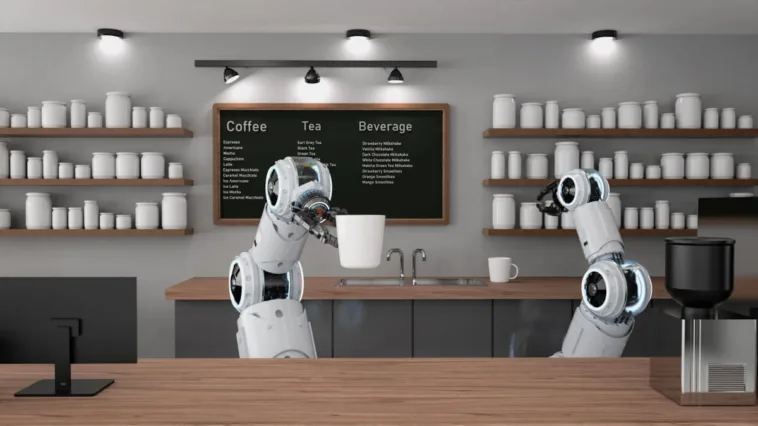Store automation goes beyond replacing manual tasks with software. E-commerce automation creates intelligent workflows that handle complex processes without constant oversight. This shift requires understanding which tasks need human attention and which can be automated.
Moving from manual to automated operations demands a fundamental change in store owners’ daily tasks. Automation frees up time to concentrate on strategy, customer relationships, and business growth. This shift transforms store management from reactive to proactive, enabling scalable growth without proportional increases in workload.
WooCommerce‘s architecture supports numerous automation tools and integrations. Popular plugins like AutomateWoo handle order processing, inventory updates, customer communication, and marketing campaigns. These tools connect through APIs, allowing different systems to share data and work together.
Essential automation tools include order management systems that route orders to fulfillment centers, inventory tracking software that maintains accurate stock levels, and customer service platforms that handle routine inquiries.
Zapier connects your store with external services, while HubSpot’s WooCommerce integration manages customer relationships.
Email marketing platforms like MailChimp segment customers and send targeted messages based on behavior, while accounting integrations sync sales data with bookkeeping software.
Instant Inventory Management
Automated inventory management eliminates stock discrepancies across sales channels. Real-time synchronization ensures stock levels update automatically with every sale, return, or adjustment. This precision prevents oversell situations and helps maintain optimal stock levels without constant manual monitoring.
Smart reordering systems automate stock monitoring and sales velocity. When inventory hits predetermined thresholds, the system can generate purchase orders or alert suppliers.
These automated communications reduce stockouts and prevent excess inventory. Purchase order automation considers seasonal demand, supplier lead times, and historical sales patterns to optimize quantities.
Fulfillment on Autopilot
Automated fulfillment systems route orders to the best warehouse based on inventory availability, shipping distance, and delivery speed. This intelligent routing reduces shipping costs and delivery times while balancing workload across multiple centers. The system can also split orders when items ship from different locations.
Returns management benefits significantly from automation. When customers request returns, the system can automatically generate return shipping labels, send instructions, and update inventory counts. This streamlined process reduces customer service workload while improving the customer experience. Once returns arrive at the warehouse, automated quality checks and inventory updates ensure fast processing and proper stock allocation.
Personalization at Scale
Automated personalization transforms shopping experiences into tailored customer journeys. Product recommendation engines analyze purchase history, browsing behavior, and similar customer profiles to suggest relevant items. These systems continuously learn from customer interactions, improving recommendations and increasing average order values.
Email automation personalizes beyond name insertion. Advanced systems track customer behavior and preferences to deliver relevant content, like abandoned cart reminders with personalized discounts, birthday offers, or notifications for frequently browsed items on sale.
Automated segmentation ensures customers receive messages that match their interests and shopping habits, leading to higher engagement rates.
Customer Support Without the 3 AM Alerts
Automated customer support systems provide instant responses to common questions, freeing up human agents for complex issues. Smart chatbots handle routine inquiries about shipping status, return policies, and product information.
These AI-powered assistants learn from each interaction, improving their ability to resolve customer questions without human intervention.
Automated ticket routing ensures customer issues reach the right department immediately. The system analyzes message content and customer history to assign appropriate priority levels and support agents.
This routing reduces response times and ensures urgent issues receive immediate attention. Automation also handles follow-up communications, satisfaction surveys, and ticket status updates, maintaining clear communication throughout the support process.
Security and Maintenance on Cruise Control
Automated security systems protect your store 24/7 without constant monitoring. Scheduled backups preserve critical data and store configurations, while automated updates keep your WooCommerce installation and plugins current with security patches. Regular automated scans detect vulnerabilities before exploitation.
Automated monitoring tools continuously check for suspicious activities and potential security threats. They track login attempts, file changes, and database modifications, alerting store owners to potential security issues. Automated firewall rules adapt to new threats, while malware scanning tools protect your store and customers from emerging risks.
Future-Proofing Your Store
Machine learning and AI tools transform online stores’ operations, from inventory forecasting to fraud detection. These technologies enable sophisticated automation, like predicting customer behavior or optimizing pricing strategies. Natural language processing improves customer interactions through intelligent chatbots and voice interfaces.
The next wave of e-commerce automation focuses on emerging shopping channels. Voice commerce integration enables purchases through smart speakers and virtual assistants. Wearable technology creates opportunities for automated notifications and personalized shopping experiences.
These innovations require flexible automation systems that can adapt to new customer interaction methods while maintaining consistent experiences across all channels.
Automate, Don’t Alienate
Start your automation journey by identifying time-consuming processes that lack strategic value. Implement automation gradually, testing each system thoroughly before moving to the next. Focus on solutions that enhance rather than replace the human elements of your business.
Remember that automation augments your team’s capabilities, not replace personal connections with customers. Regular monitoring and adjustment of automated systems ensure they meet operational needs and customer expectations. The goal remains better service and experiences through intelligent automation.
